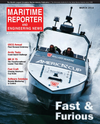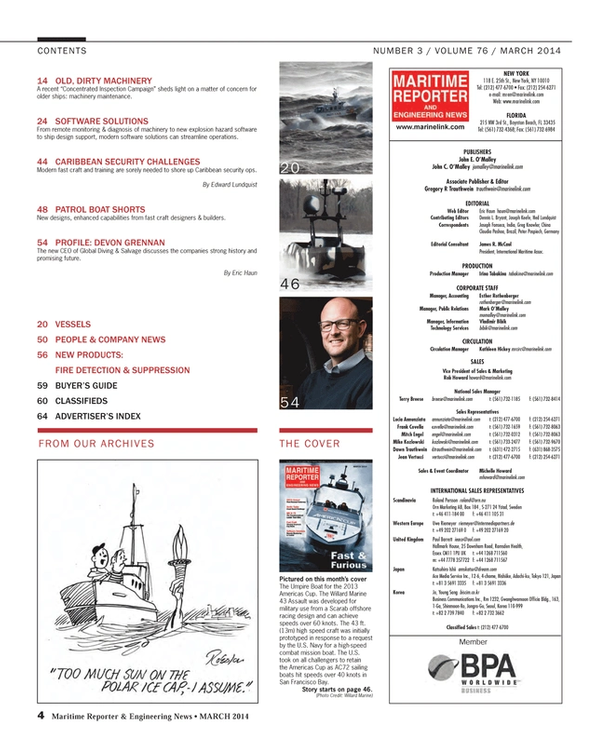
Old Ships & Dirty Machinery
Propulsion and Auxiliary Machinery: A Matter of Concern on Older Ships
Preliminary results from the Concentrated Inspection Campaign (CIC) on Propulsion and Auxiliary Machinery, carried out between September 1 and November 30, 2013 in the Paris MoU region show that:
• 68 ships (41% of all detentions) were detained over the 3 month period as a direct result of the CIC for deficiencies related to propulsion and auxiliary machinery. Problem areas included the propulsion of the main engine, cleanliness of the engine room and emergency source of power/emergency generator.
• In previous years deficiencies related to propulsion and machinery installations accounted on average for 7% of the total number of deficiencies within the Tokyo and Paris MoU´s, ranking number six in comparison with all the deficiencies by categories statistics. Reason enough for the Paris MoU to concentrate attention to this area during a CIC.
• More than half (54%) of all CIC-topic related detentions involved ships of 20 years or more. This category had a CIC-topic related detention rate of 3.6%, which compares unfavorable to the overall 1.8% CIC-topic related detention rate. “This outcome illustrates that wear and tear of propulsion and auxiliary machinery remains an issue, which should be adequately addressed by ship owners”, said Richard Schiferli, Secretary General of the Paris MoU on PSC.
The CIC questionnaire was completed during 3,879 inspections on 4,126 individual ships. A total of 1,105 CIC-related deficiencies were recorded and 68 ships (1.8%) were detained as a direct result of the CIC. 41% of the detentions during the CIC-period were CIC-topic related. Other statistics of note include:
• 1270: During the campaign most inspections concerned general cargo/multi-purpose ships with 1,270 (33%) inspections, followed by bulk carriers with 805 (21%) inspections, container ships with 458 (12%) inspections, chemical tankers with 343 (9%) inspections and oil tankers with 272 (7%) inspections.
• 34 (50%) of the detained ships were general cargo/multipurpose ships, 9 (13%) were bulk carriers and 9 were (13%) container ships. Among the other detained ships were 6 oil tankers, 4 chemical tankers and 3 refrigerated cargo ships.
• 20%: Analysis of the recorded deficiencies shows that most deficiencies relate to propulsion main engine (20%), cleanliness of the engine room (18%), emergency source of power/emergency generator (12%) and emergency lighting/batteries/switches (12%).
• 495: Most inspections were carried out on ships under the flags of Panama with 495 inspections, Liberia with 322 inspections, Malta with 317 inspections and Antigua and Barbuda with 246 inspections.
The flags with the highest number of CIC-topic related detentions were Tuvalu with 1 CIC-topic related detention during 1 inspection, Tanzania with 6 CIC-topic related detentions during 27 inspections, Curacao with 2 CIC-topic related detentions during 16 inspections and Togo with 4 CIC-topic related detentions during 35 inspections. The CIC was a joint campaign with the Tokyo MoU.
(As published in the March 2014 edition of Maritime Reporter & Engineering News - www.marinelink.com)
Read Old Ships & Dirty Machinery in Pdf, Flash or Html5 edition of March 2014 Maritime Reporter
Other stories from March 2014 issue
Content
- Old Ships & Dirty Machinery page: 4
- USCG ... Past, Present & Future page: 6
- Floating Production Inventory Continues to Grow page: 10
- Marine Casualty Reports – Clarified page: 16
- New Propeller Optimization Process Can Analyze 10,000 Designs a Day page: 18
- Arctic Taskings for the Coast Guard page: 20
- Online Monitoring Systems Can Improve Your Bottom Line page: 22
- New Explosion Hazard Software page: 24
- Harmonized CSR-Compliant Ship Design Support Software page: 25
- Internet Remote Power Diagnosis page: 26
- USCG: The Fleet Faces Forward page: 28
- The Thad Allen No-Frills Leadership Primer page: 37
- With an Interceptor, a RHIB and a Cat page: 40
- Caribbean Security Challenges page: 44
- Swiftships Unveils USV with the University of Louisiana-Lafayette page: 46
- On Patrol: North River Boats page: 48
- Gladding-Hearn Delivers page: 48
- Retlif Testing Laboratories Marks 35 Years page: 51
- Interview: Devon Grennan CEO, Global Diving & Salvage page: 54
- NASNI Builds Navy’s First Submarine FiFi Trainer page: 56
- FFS: Fire Fighting Systems page: 57
- Enhanced Fire Protection Guide from ABS page: 57
- Halyard Expands Insulation Product Range page: 57
- Kidde FM-200 ECS Series page: 57
- New Fire Detection System page: 57
- Sea-Fire’s Triton 8 Alarm Panel page: 57
- Carnival & Marioff Sign Maintenance Agreement page: 57
- ClassNK Updates Safety Guidelines for Gas Fuelled Ships page: 58
- Engine Room Fires: Lessons Learned page: 58
- Omega Debuts New Transmitters page: 58
- Xflow Watermist from Wilhelmsen Technical Solutions page: 58
- Helicopter Refueling Systems page: 58


